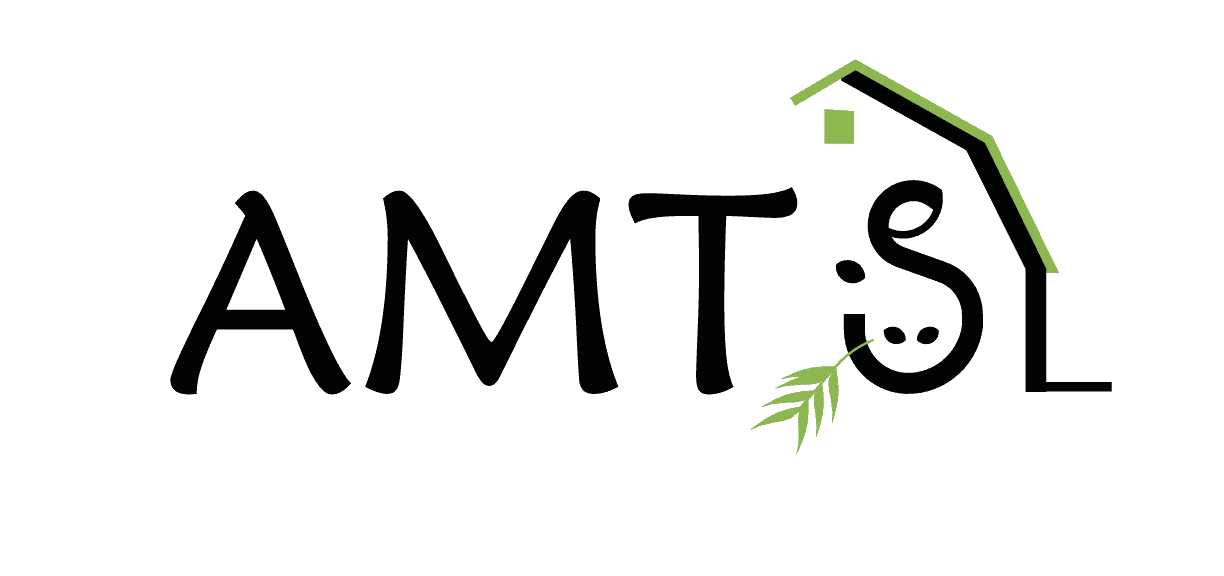Twice yearly (most of the time) we release a significant update to AMTS.Farm. This week we released a major update that included some functionality additions for very specific usages. At first glance, the program will look unchanged. We are going to take a look at the new things and leave you with a little present from us to get you through January!
Updates in the Recipe Screen
Most of the enhancement and new features are found on the Recipe Screen. Considerable time and testing have been focused on improving the Advanced Optimizer functionality. The Balance of other improvements are found under the Recipe Tools dropdown. We have added feeds for consideration in the Specialty Evaluation Tool for output predictions outside of official CNCPS biology. Two new screens can be accessed through the dropdown, the Management Module and the Component/Robot Feeding Tool. These tools are based off research our team has been doing in conjunction with the Miner Institute (Management Module) and immersion on a robot dairy (Robot Tool).
Improvements to the Advanced Optimizer
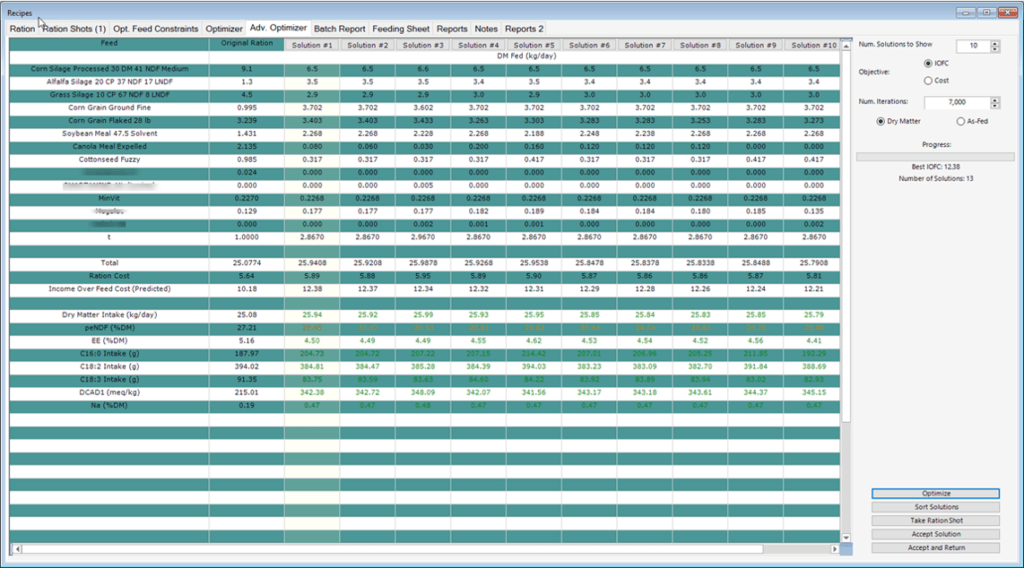
Optimizers in nutrition formulation programs are tough; they are misunderstood and often illtreated. They are meant to be a tool to assist in formulation and diet tweaking. Unfortunately, they are viewed as auto-balancers by some and, by others, starved of the right information they need to generate responsible results. We encourage our users to understand that in order for the program to help them, they need to create a feasible diet. The optimizers in the program (both the basic, linear, optimizer and the Advanced Optimizer) use math to arrive at a solution. They are not nutritionists, they do not know cow’s or sheep or goat’s biological needs and restrictions. You cannot just set up your locations, animals, and choose a bunch of feeds, click the optimize button and expect to have a viable diet. The improvements to the Advanced Optimizer make that more of a possibility. Tom worked with a Math Genius and does not stop talking about how wonderful the results are. However, the optimizers (and the animals, for that matter) will perform better if you first formulate a diet and set up ranges within which you want the outputs to fall, then optimize. That process is laid out in this video; we do have subtitles, so use them if you need to. We have updated our Advanced Optimizer video, found through this link.
Updated Feeds in the Specialty Evaluation Tool
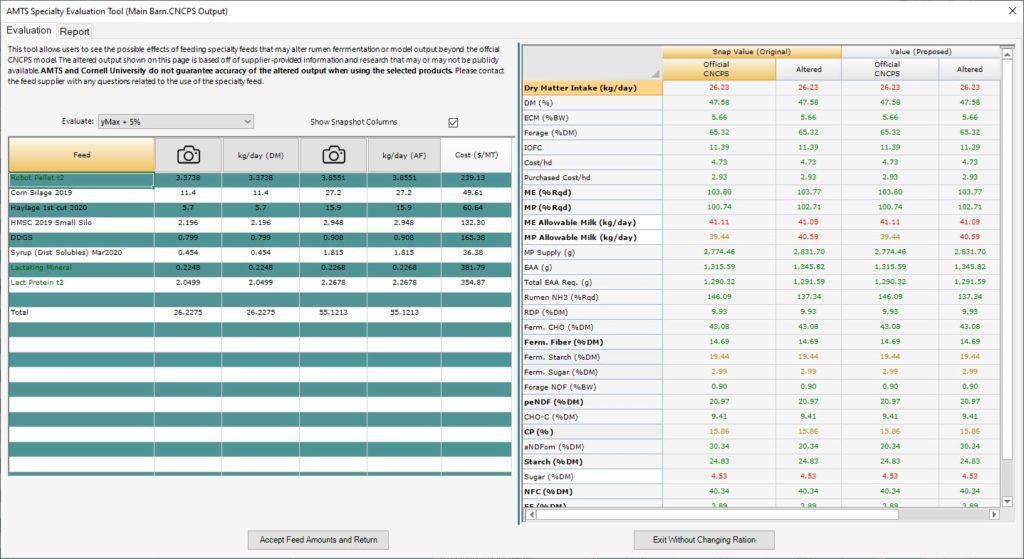
The Specialty Evaluation Tool is a feature that has been available in AMTS.Farm for a couple of years. The intent of the tool is to let you see the possible effects of feeding specialty feeds that may alter rumen fermentation or model output beyond the official CNCPS model. Given the present limitations on University resources, manpower, and funding; the official process for updating the CNCPS biological predictions lags behind commercial product development. In that vacuum, specialty feed manufacturers test ingredients, have studies, and market products based on proprietary information showing altered outputs. We know that you, as a nutritionist with experience demonstrating these different results, need to be able to show your clients and formulate diets that show the results outside of official biology. That said, we adhere to CNCPS biology. When our program is predicting results that are not official, we label the tools used to get that information clearly. It is important to us that you have full faith in both the model and our program.
We have worked with Alltech and Arm & Hammer to thoroughly review and test how their products, Optigen for Alltech and Fermenten and Bio-Chlor from Arm & Hammer change outputs. When we add feeds to the Specialty Evaluation Tool we enter into an agreement with the supplier to ensure the outputs generated with the addition of their product is correct to their research. As we mentioned when we created this tool, more feeds will be added as more companies request inclusion. Suppliers interested in knowing more about this process should contact support.
The update includes Cow Time Management Model from Miner
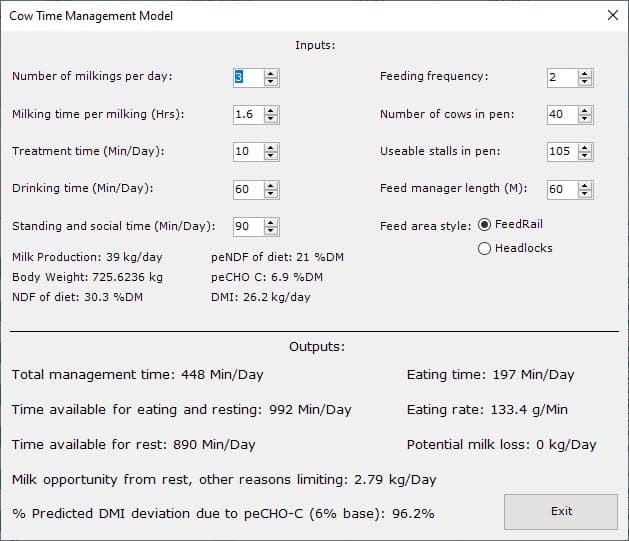
In a talk at the 2020 Cornell Nutrition Conference, held virtually, Dr Michael Miller, then at the William H Miner Institute and now with Trouw Nutrition, presented his work to create a model that accurately quantifies the effects of stocking density and feeding frequency on behavior and performance. His research, in conjunction with Dr Tom Tylutki and Dr Rick Grant, was used to develop the Cow Time Management Model included in this release. The model, a popup on the Recipe Screen, provides insight on potential management roadblocks to productivity based on inputs of stocking density, diet particulars regarding diet NDF characteristics, body weight, and management factors (like milkings/day and time away from feed). Using this model, you can incorporate physical and management factors into ration analysis.
Introducing the Component/Robot Feeding Tool Screen
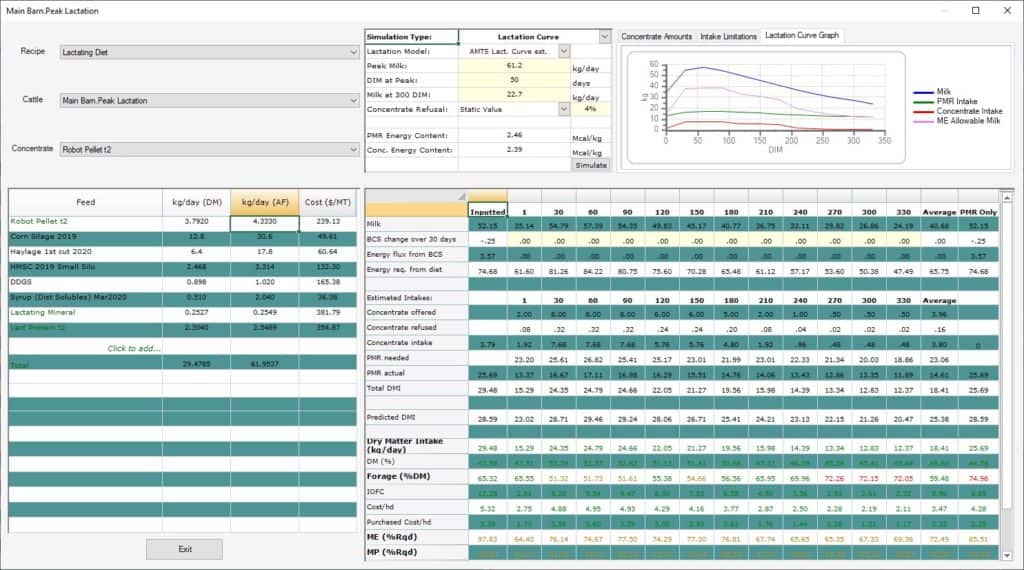
We have been working to develop this tool for over a year. Our primary designer of this screen has been Sam Fessenden, who recently left his full-time position with us to start a robot dairy with his wife and her parents. Sam continues part-time with AMTS but, very critically, has been developing this tool in the trenches. We are releasing the Component/Robot Feeding Tool as a beta version, because, as Sam said—”once you start working with robots, many of your assumptions turn out to be not quite so”. After a lot of designing and redesigning we have a screen that has passed Sam’s initial hurdles. We want you to try it and to give feedback!!! When you use the robot screen you will notice there are multiple tabs and places for inputs. We have created this video to walk you through set up. It is pretty nifty as it is right now—you can look at lactation curves and production predictions in both robot and component fed herds with partially mixed rations (PMRs) and concentrates or you can use it to look at lactation curve predictions in conventionally fed herds (non-robot). You can input the variation in Body Condition Score (BCS) and capture the energy from reserves in a very dynamic way. Check out the video and play around with the tool. Even if you are not feeding robot herds, you may find this useful.
We have Added Asterisks to Feeds in the Nutrients Report

One of the hidden gems in the Recipe Screen is the Nutrient Contribution report screen. It is not really hidden but a lot of our users are surprised and excited when we point it out. Next to certain outputs on the Recipe screen, there is a question mark ?. When you click that box, a lovely pie-chart and table pop up showing the percentage contribution of each feed in the diet to that specific nutrient. Check out the image above, it is easier than visualizing from my description. For several years, CNCPS users have been encouraged to use the aNDFom digestibility timepoints for forages and non-forage fiber sources as a determination of carbohydrate pools and rates of passage. The major labs have invested time and money in developing robust NIR equations for these values. In the CNCPS model, the uNDF240 (forages) or the uNDF120 (non-forages) in conjunction with two(sometimes 3—more on that here) other timepoints to determine the NDF rate of passage. Research by the Van Amburgh group at Cornell University showed that these measures are more reliable than the old lignin x 2.4 calculation for determining the size of the CHO-C pool. These numbers are important and are not populated in the Feed Library—you have to have the analysis done by the lab. Because we found so much confusion around whether the values are in the Library by default, we have decided to alert users using an asterisk. Again, this is especially critical when looking at the CHO-C feed contributions. We have designated any feed that does not have the timepoint analyses with an *asterisk. And, for you sports fans out there, this is not a good thing. As Tom would say, “Folks, get the timepoints done.”
You can trial all our programs by downloading a full version through our AMTS website. Remember, as we mentioned in early December, we are giving every user the opportunity to trail AMTS.Farm.Small Ruminants until January 31, 2021. If you have any questions, please contact any of us through support@agmodelsystems.com
